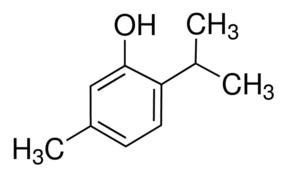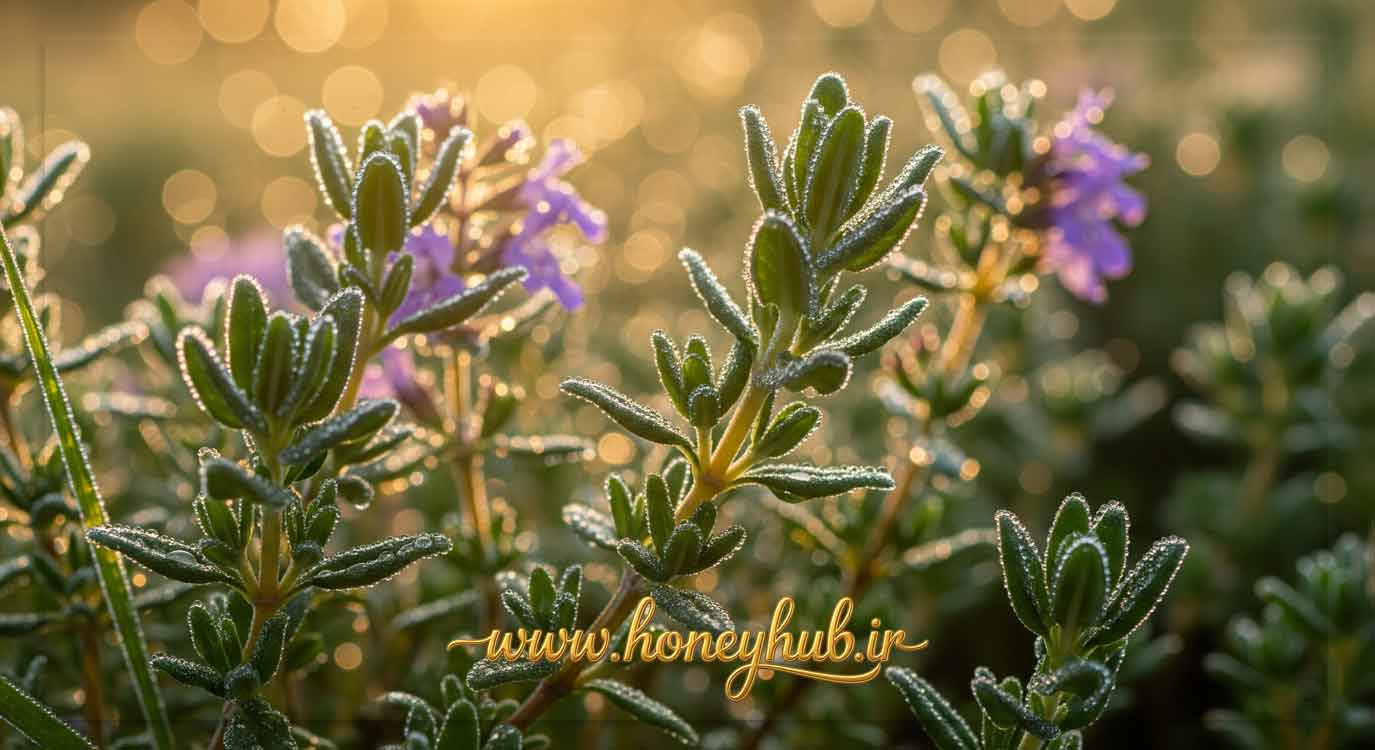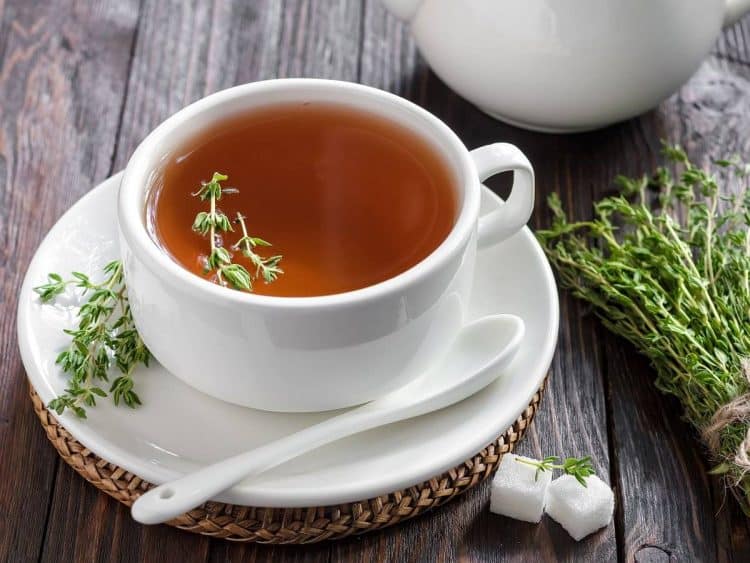Does your mozzarella refuse to stretch or just burn? The secret is science. From "pasta filata" to the crucial role...
The Ultimate Guide to Thyme: A Treasure of Flavor and Health
Introduction: A Journey into the Amazing World of Thyme
Thyme, that small, unassuming herb we might see every day in our kitchens or gardens, is actually one of the oldest and most useful plants in human history. Known scientifically as Thymus vulgaris, thyme is a proud member of the mint family (Lamiaceae) and has been cultivated and used by humans for thousands of years. This aromatic herb doesn't just elevate our dishes with its incredible flavor and scent; it also holds a treasure trove of medicinal, health, and cosmetic benefits in its tiny leaves. In this comprehensive guide, we'll take a deep dive into the world of thyme—from its historical roots and botanical profile to its active chemical compounds, amazing health benefits, and diverse uses in our daily lives. Stick with us to get to know this gift of nature and learn the secrets to using it to its fullest potential.
A Trip Through Time: The Rich History of Thyme
The story of thyme begins with ancient civilizations. The use of this herb is so old that its traces can be found in cultures from Ancient Egypt and Greece to the Roman Empire and the Middle Ages.
Ancient Egyptians: Guardian of Eternity
The ancient Egyptians were among the first to recognize thyme's antimicrobial and preservative properties. They used its essential oil in the complex process of mummifying pharaohs and nobles to protect the bodies from decay. For them, thyme was a symbol of immortality and protection in the afterlife.
Ancient Greeks: A Symbol of Courage and Elegance
In ancient Greece, thyme held a special place. The word "Thyme" is derived from the Greek word "thumos," meaning "courage" or "to fumigate" (due to its use as incense). The Greeks believed thyme was a source of courage, and soldiers would bathe in thyme-infused water before battle. They also burned it as incense in their temples to purify the air and please the gods. Hippocrates, the father of medicine, used thyme to treat respiratory and digestive ailments.
The Romans: Flavoring and Purifying
The Romans, who inherited much from Greek culture, expanded thyme's uses. They used the herb to flavor their cheeses and alcoholic beverages. It was also customary to burn bunches of thyme in their homes to ward off pests, clear out negative energy, and freshen the air.
The Middle Ages: A Balm for Wounds and the Plague
During the dark times of the Middle Ages, thyme was seen as a protective shield against diseases. When the Black Death swept through Europe, people carried posies of thyme or burned it in the hopes of warding off the illness. Thanks to its antiseptic properties, a decoction of thyme was also used to wash wounds and prevent infection. In that era, ladies would embroider sprigs of thyme on scarves for knights heading to war, as a gift of courage and protection.
Popular Thyme Varieties in American Gardens
While Common Thyme is the most well-known variety, the world of thyme is vast, encompassing hundreds of species and cultivars, each with unique characteristics perfect for any garden or kitchen. Here are some of the most popular types found in the U.S.:
- Common or English Thyme (Thymus vulgaris): This is the go-to culinary herb, beloved for its classic, earthy flavor. It's a staple in everything from Thanksgiving stuffing to roasted chicken.
- Lemon Thyme (Thymus citriodorus): As its name suggests, this variety has a wonderful, strong citrus scent. It's fantastic for flavoring chicken, fish, and even desserts, adding a bright, zesty note.
- Creeping Thyme (Thymus serpyllum): This low-growing variety spreads like a green carpet, making it a popular ground cover in gardens and between paving stones. It produces beautiful pink and purple flowers and is very hardy.
- Caraway Thyme (Thymus herba-barona): Native to Sardinia and Corsica, this variety has a unique aroma reminiscent of caraway seeds, making it a great addition to breads and savory dishes.
The Botany of Thyme
Thyme, with the scientific name Thymus vulgaris, is a woody, perennial, and evergreen shrub from the mint family (Lamiaceae). Its stems are typically woody at the base and herbaceous at the top, growing in an upright or sprawling manner. The small, oval, and opposite leaves, which grow in clusters around the stem, are the primary part of the plant used. These leaves have a delicate texture and a powerful, pleasant aroma, which comes from the essential oil glands on their surface.
Thyme's small flowers, which are white, pink, or purple, bloom in the late spring and early summer. They appear in clusters and are incredibly attractive to bees, resulting in the production of a highly sought-after honey known as Thyme Honey. Thyme is a resilient plant that can thrive in tough environmental conditions like drought, poor soil, and even light frosts. It requires full sun and well-draining soil (preferably sandy or loamy) with a neutral to alkaline pH. At maturity, this shrub's height varies between 8 to 20 inches, and it typically takes 2 to 5 years to reach its full size.
A Practical Guide to Growing Thyme
Growing thyme in your garden or even in a small pot on your balcony is incredibly easy and gives you constant access to this fresh, aromatic herb.
Planting
Thyme can be propagated from seed, cuttings, or by dividing the plant. Growing from seed takes longer, and the cutting method usually yields better results. The best time to plant is in the spring after the danger of frost has passed. Thyme needs at least 6 hours of direct sunlight a day and soil with excellent drainage. This plant will quickly develop root rot in heavy, wet soil.
Care
Thyme is a very low-maintenance plant. Once fully established, it requires very little watering and is drought-resistant. Allow the soil surface to dry out completely between waterings. It doesn't need much fertilizer; in fact, over-fertilizing can reduce its flavor and aroma. To maintain the plant's shape and encourage new growth, you can give it a light trim after it finishes flowering.
Harvesting and Storing
You can harvest thyme sprigs at any time of the year, but the best time is right before it starts to flower in late spring; this is when the concentration of essential oil in the leaves is at its peak. Cut the sprigs from the green, herbaceous parts and avoid cutting into the old, woody sections.
- Using Fresh: You can store fresh thyme in the refrigerator for up to a week.
- Drying: To dry thyme, hang small bunches upside down in a warm, dry, and dark place. Once completely dry, strip the leaves from the stems and store them in an airtight container away from light. Dried thyme has a more potent flavor than its fresh counterpart.
Thyme in Traditional Herbalism
In Traditional Persian Medicine, every food and herb has a specific "nature" or temperament. Thyme is classified as "hot and dry." This quality makes it an effective herbal remedy for individuals with a "cold and wet" constitution. In this system, thyme is believed to help reduce excess moisture in the body, boost the immune system, and improve digestive function. In Western herbalism, this translates to its properties as a warming, stimulating herb that can improve circulation and act as a decongestant. However, those with a naturally "hot" constitution should use it in moderation to avoid symptoms like dry mouth or restlessness.
What Gives Thyme Its Power? Unpacking the Chemistry
The healing power of thyme isn't magic—it's complex chemistry. This power is concentrated in its essential oil, which makes up about 1% to 2.5% of the dried leaves' weight. This oil is rich in phenolic compounds that have extraordinary antiseptic, antibacterial, antifungal, and antispasmodic properties.
Thymol and Carvacrol
The two main stars in the world of thyme are thymol and carvacrol. These two phenols are primarily responsible for the plant's powerful antimicrobial properties. A German chemist, Caspar Neumann, first isolated this oil in 1719, and in 1853, a French chemist gave it the name "thymol." Thymol was such a powerful disinfectant that it was widely used during World War I to sterilize medical equipment and prevent wound infections. Today, thymol is synthetically produced and used in products like Listerine mouthwash, antifungal creams, and topical rubs like Vicks VapoRub.

Other Valuable Compounds
In addition to thymol and carvacrol, thyme contains other beneficial compounds:
- Flavonoids: Compounds like apigenin, luteolin, and naringenin, which have strong antioxidant and anti-inflammatory properties.
- Terpenes: Compounds like linalool and geraniol contribute to thyme's complex aroma and also have antimicrobial properties.
- Rosmarinic Acid: A potent antioxidant and anti-inflammatory agent found in many plants of the mint family.
Thyme Nutrition Facts
Thyme is valuable not only for its medicinal properties but also for its nutritional content. This herb is a good source of essential vitamins and minerals. The table below shows the nutritional value of 100 grams of fresh thyme:
| Nutrient | Amount | % Daily Value (%DV) |
|---|---|---|
| Energy | 101 kcal | 5% |
| Total Carbohydrates | 24.5 g | 8% |
| Dietary Fiber | 14 g | 56% |
| Protein | 5.6 g | 11% |
| Total Fat | 1.7 g | 2% |
| Vitamin C | 160 mg | 266% |
| Vitamin A | 4751 IU | 95% |
| Iron | 17.5 mg | 97% |
| Calcium | 405 mg | 40% |
| Magnesium | 160 mg | 40% |
| Potassium | 609 mg | 17% |
The Wide-Ranging Uses of Thyme
Thyme is a multipurpose herb whose uses go far beyond simple seasoning.
Thyme in the Kitchen: The Heart of Mediterranean Cooking
The warm, earthy, and slightly pungent flavor of thyme has made it a cornerstone of cooking, especially in French, Italian, and Mediterranean cuisines. It pairs well with red meat, poultry, fish, root vegetables (like carrots and potatoes), tomatoes, garlic, and lemon. It's a key ingredient in spice blends like Herbes de Provence and the Middle Eastern blend Za'atar.
- In Cooked Dishes: Thyme holds its flavor well during long cooking processes, making it perfect for soups, stews, chowders, and roasted meats.
- In Marinades and Sauces: Adding thyme to marinades and sauces imparts a wonderful depth and complexity to their flavor.
- Fresh: Use fresh thyme leaves to garnish and add a final burst of flavor to salads, pastas, and seafood dishes.

Ready to live a healthier life and enjoy the unforgettable taste of pure, natural honey? Explore our collection and experience the best that nature has to offer.
In the Pharmaceutical and Health Industries
As mentioned earlier, thyme's antiseptic and expectorant properties make it a key ingredient in the production of cold and cough remedies. It's a key component in many herbal cough syrups and lozenges available worldwide. In the health and beauty industry, thyme essential oil is used in toothpaste, mouthwash, antibacterial soaps, and anti-dandruff shampoos.
Thyme Essential Oil: A Powerful Concentrate
Thyme essential oil, extracted through steam distillation of the plant's leaves and flowers, is a highly concentrated and potent liquid. This oil is widely used in aromatherapy to reduce stress and improve mood. Due to its strong antifungal and antibacterial properties, it is also used in a diluted form to treat skin issues like acne and fungal infections. To fully explore the amazing world of this extract, you can read our specialized article: 21 Magical and Unbelievable Benefits of Thyme Essential Oil.
The Amazing Health Benefits of Thyme
Thyme is a natural pharmacy that can help prevent and treat many ailments. Below, we'll explore its most important therapeutic properties in detail.

1. Soothes Coughs and Sore Throats: A Natural Expectorant
This is one of thyme's most famous benefits. The active compounds in thyme, especially thymol, have expectorant and antispasmodic properties. This means thyme can help thin thick mucus in the respiratory tract and relieve dry, irritating coughs by relaxing the bronchial muscles. Drinking thyme tea or inhaling its steam during a cold, bronchitis, or sore throat can significantly help clear the lungs and reduce throat inflammation.
2. Helps Manage Blood Pressure and Heart Health
Recent studies have shown that thyme extract can help lower blood pressure. A study at the University of Belgrade in Serbia found that wild thyme extract significantly reduced blood pressure in lab rats. Thyme is also rich in potassium, a mineral essential for regulating blood pressure and maintaining fluid balance. Swapping salt for thyme powder in your meals can be a smart move for your cardiovascular health.
3. Boosts the Immune System
Thyme is a powerhouse of immune-boosting nutrients. It's an excellent source of Vitamin C, which is vital for producing white blood cells and fighting infections. It's also packed with Vitamin A, iron, manganese, and powerful antioxidants, all of which play a role in strengthening the body's defenses against pathogens.
4. Improves Digestion and Soothes GI Issues
Thyme has long been used to treat digestive problems like bloating, gas, indigestion, and stomach cramps. Its antispasmodic properties can help relieve intestinal cramping, and its antimicrobial properties can combat harmful bacteria in the digestive tract. Drinking thyme tea after a meal can aid digestion and may help reduce the symptoms of Irritable Bowel Syndrome (IBS).
5. Enhances Mood and Reduces Stress
The scent of thyme isn't just pleasant—it's therapeutic. The compound carvacrol in thyme's essential oil has been shown in preliminary studies to affect neurotransmitter activity, boosting levels of serotonin and dopamine. This can lead to a sense of calm, reduced stress, and an improved mood. Using thyme essential oil in a diffuser can create a relaxing atmosphere in your home or office.
6. Fights Acne and Skin Problems
Thyme's powerful antibacterial properties make it an effective natural treatment for acne. Acne is often caused by the overgrowth of the bacterium Propionibacterium acnes on the skin. Studies have shown that a thyme tincture (an alcohol extract) is even more effective at killing this bacterium than benzoyl peroxide, the active ingredient in many anti-acne creams. Additionally, its anti-inflammatory and antifungal properties can help soothe eczema and other fungal skin infections.
7. Relieves Muscle and Rheumatic Pain
Thyme's warming properties make it a natural pain reliever for aches caused by cold and dampness, such as joint pain, rheumatism, and arthritis. Applying thyme oil topically to painful areas can help increase circulation and reduce inflammation and pain. Adding a few drops of thyme essential oil to a warm bath is also an excellent way to relieve sore muscles after a workout.
The Special Benefits of Thyme Tea
Making thyme tea is one of the easiest and most popular ways to enjoy the benefits of this herb. To make it, simply steep one teaspoon of dried thyme leaves in a cup of hot water for 10 minutes. This miraculous drink offers numerous benefits:
- Reduces Menstrual Cramps (PMS): Its antispasmodic and anti-inflammatory properties help soothe period pain.
- Calming and Sleep-Inducing: A cup of thyme tea before bed can help calm your nerves and promote restful sleep.
- Disinfects Mouth and Throat: Gargling with lukewarm thyme tea is very effective for bad breath and soothing a sore throat.
- Aids Digestion: It helps with digestion and relieves bloating.

Side Effects and Precautions
Although thyme is safe for most people in typical culinary amounts, medicinal or excessive use can have side effects and requires caution.
Side Effects of Excessive Use
The active compound thymol can be toxic in high doses. Overconsumption of thyme or its extract may cause gastrointestinal irritation, nausea, vomiting, headaches, dizziness, and in rare cases, a decrease in heart rate and body temperature. Drinking too much thyme tea may also lead to constipation.
High-Risk Groups
- Pregnant and Breastfeeding Women: Due to its potential effects on hormones and the uterus, medicinal use of thyme is not recommended during pregnancy.
- People with Allergies: Those who are allergic to other plants in the mint family, such as oregano, basil, and mint, may also have an allergic reaction to thyme.
- Patients with Bleeding Disorders: Thyme might slow blood clotting. Individuals taking anticoagulant drugs (like Warfarin) or who are scheduled for surgery should avoid high doses of it.
- People with Hormone-Sensitive Conditions: Some research suggests that thyme might act like estrogen in the body. Therefore, individuals with conditions like breast cancer, uterine cancer, or uterine fibroids should be cautious with its use.
Frequently Asked Questions (FAQ)
1. What's the difference between thyme and oregano?
Although both are from the mint family and share some similarities, they differ in taste and appearance. Thyme has an earthy, floral, and slightly sweet flavor, while oregano is more pungent, sharp, and robust. Thyme leaves are typically smaller and more needle-like.
2. Can I drink thyme tea every day?
Drinking one to two cups of thyme tea daily is safe for most people. However, if you have a specific health condition or are taking medication, it's best to consult with a doctor or herbalist before regular consumption.
3. What's the best way to store fresh thyme?
Wrap fresh thyme sprigs in a damp paper towel and place them inside a plastic bag in the refrigerator. This way, the thyme will stay fresh for up to two weeks.
4. Can I consume thyme essential oil orally?
No, never! Essential oils are highly concentrated and potent, and ingesting them can be toxic and dangerous. Thyme essential oil is only for topical use (after being diluted with a carrier oil like coconut oil) and for inhalation (aromatherapy).
5. Which type of thyme is best for cooking?
Common or English thyme (Thymus vulgaris) and lemon thyme (Thymus citriodorus) are two of the best and most widely used varieties for culinary purposes.
Conclusion: Thyme, More Than Just an Herb
Thyme, this small plant with a grand history, reminds us how nature offers the most powerful medicines and flavors in the simplest of forms. From the temples of ancient Greece to modern-day kitchens, and from cough syrups to skin creams, thyme has always been a reliable companion for health and pleasure. By gaining a deeper understanding of the properties, compounds, and applications of this valuable herb, we can use it more intelligently in our daily lives and benefit from the aromatic and therapeutic treasure hidden in each tiny leaf. So the next time you hold a sprig of thyme, remember that you're not just holding a seasoning—you're holding a key to a world of health, flavor, and history.





















Latest comments